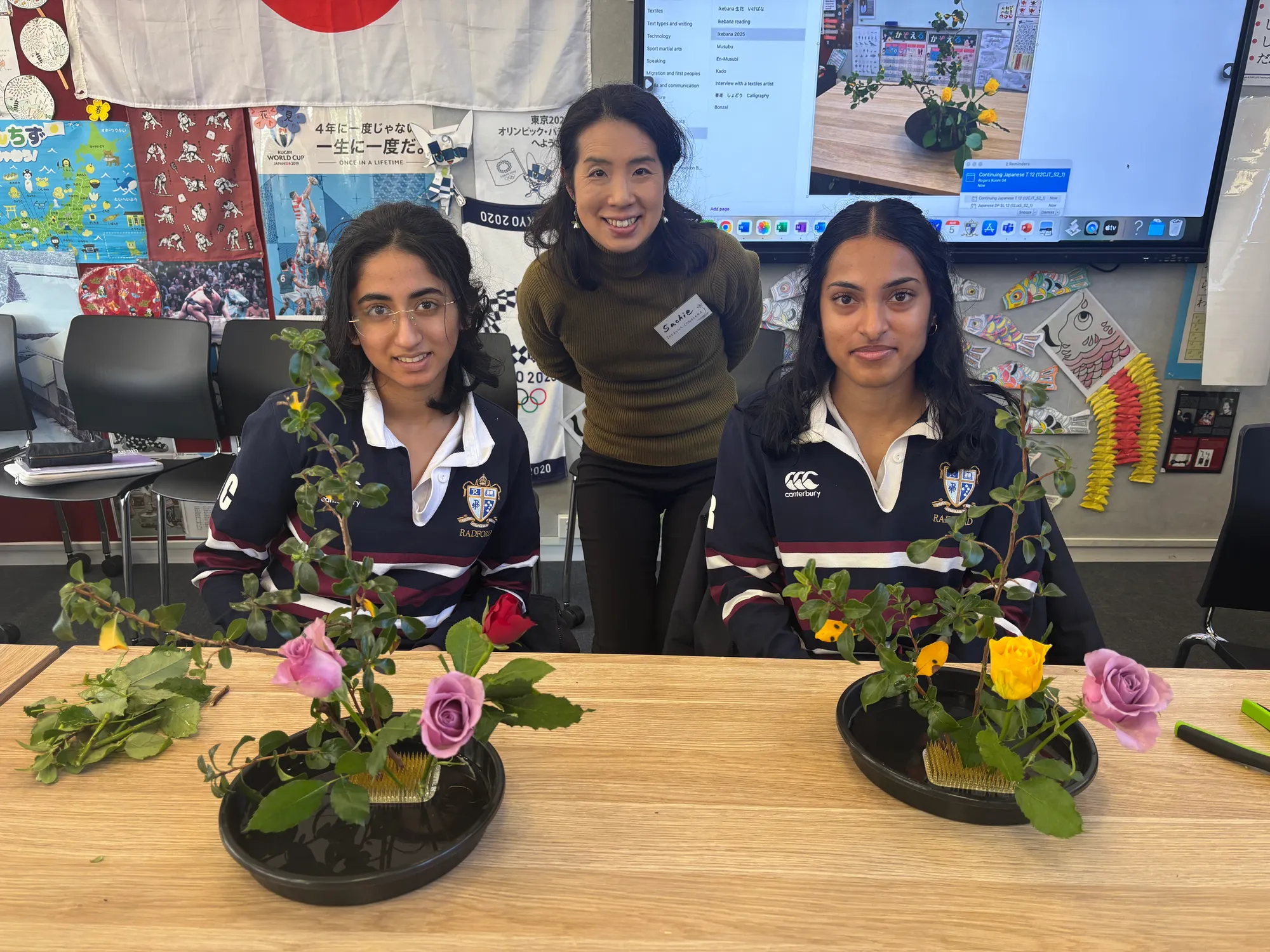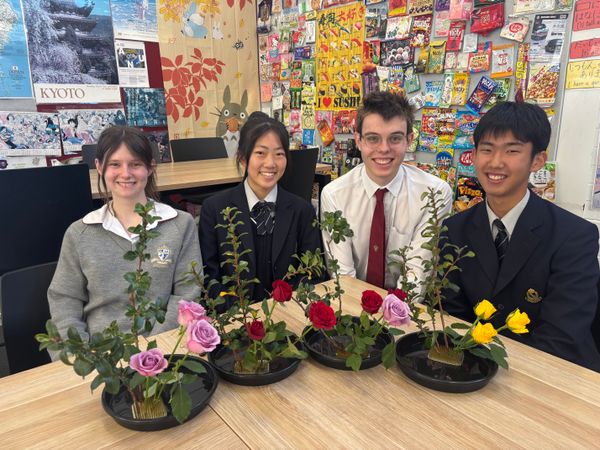Year 12 Japanese ikebana workshop
By Ms Michele Sharp, Head of Languages
The Year 12 BSSS and IBDP classes are studying the themes of Diverse Perspectives and Human Ingenuity. Within these themes students learn how culture and language are expressed and appreciated in diverse mediums such as the arts and sciences. We recently delved into Japanese tea drinking culture where we enjoyed a cup of tea on a cold Canberra morning and ate some snacks local to the Okayama region of Japan.
Earlier this week we participated in a practical workshop delivered in Japanese by Sachie Terasaki from Ikebana Canberra. This was a natural extension of our learning on the Japanese aesthetics of wabi sabi (valuing impermanence and simplicity) and mono no aware (the emotions that objects evoke). Having never had the chance to do ikebana in Japan, Daiki and Kaho, two students on Long Exchange from our sister school Konko Gakuen, also joined the activity.

Ikebana, also called kado, is the art of flower arranging. It has a long history in Japan and has connections with the Shinto and Buddhist religions. Whilst some may think of ikebana as a feminine pursuit, it has been practiced as a form of meditation by Buddhist priests and was created by samurai before going into battle. They viewed the arrangements as an opportunity to purify their minds and as a symbol of their own mortality.
We learnt how to create a traditional もりばな (moribana) ikebana arrangement which is arranged in a shallow container like a bowl or on a plate, as well as a freestyle vase arrangement. Students soon found out it was not as easy as it looked and involved a lot of maths as the flowers and branches are arranged at set angles and lengths.
Culture is something very much embedded in a language, and we strive to allow our students the opportunity to experience the rich cultural elements of the language they are studying alongside vocabulary and grammar.
